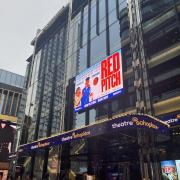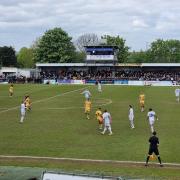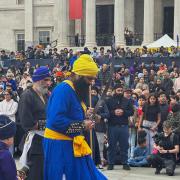
On the 29th of March, after being closed for almost three months, outdoor sports were able to return. For many people, who were unable to play beloved sports such as tennis and golf during the nationwide lockdown, the news came as a breath of fresh air, and a step towards the normality that had been desired for so long. The Elms Tennis Club in Stanmore was one of the tennis clubs that opened its gates to the 300 people that participate in their programs. I spoke to Marc Peterson, Head Coach, about his own tennis journey and to understand how the club was able to make its return.
Marc, who joined the club on the cusp of the first lockdown in March 2020, began playing tennis at just three years old. The sport, alongside football, became a major part of his childhood and adolescence and remains his passion to this day. Although he never intended to be a tennis coach – initially pursuing the professional football route – after four years in the job, he couldn’t be happier.
As Head Coach, Marc hopes to bring his own ideas to the club, intending to integrate another of his passions: Pilates. Having discovered it after an injury that stopped him playing sport in university, Pilates quickly became a very important part of Marc’s life, so much so that he started his own classes online, teaching it to children and teenagers.
However, when lockdown was announced and tennis courts closed, whilst Pilates and running may have been able to compensate for the inability to play tennis, for Marc and other tennis enthusiasts, the absence was strongly felt. “Nothing really replaces the real thing,” he explained. Although the Lawn Tennis Association (LTA), the national governing body of tennis, started a petition to exempt outdoor tennis from closure, it ultimately felt through, leaving tennis players disappointed and waiting in anticipation for March 29th.
Lockdown had a huge impact on Elms Tennis Club, with the main effect being a substantial loss of money. Several staff were furloughed, but for those who made a part of their income through private lessons, including Marc, they only received a fraction of their normal income through the lockdown period. The further uncertainty, caused by repeated closures and reopening, only exacerbated these problems. Despite it being ‘so stop and start,’ as described by Marc, the silver lining was that each time, opening up again became inevitably easier; the response became efficient and almost reflex.
Even before returning, Marc expressed how the absence only made people miss playing even more and he ‘just knew everyone was raring to come back.’ Upon return, the club was immediately busy, and Marc stated how he was very pleasantly surprised at the number of adults who had taken up tennis after being unable to go to gyms. He went on to say how it was extremely satisfying to see someone who had not played tennis since their youth begin playing again and facilitate them to rediscover a passion.
When asked what he found most rewarding about coaching, he described how building up the skills in someone from scratch and then watching them develop and improve gave him great joy. He also emphasised the importance of playing sports: you can meet new people, learn more about yourself and significantly improve your physical and mental health. “You learn how to lose, you learn how to win, you learn how to be resilient and not give up.” These skills, whilst improving your ability, are also incredibly transferable to everyday life.
With members back to the courts and programs in full swing, the future for Elms looks promising. “We are looking at modernising, refreshing and moving forward,” Mark explained. Whilst there is still a long way to go to normality, the opening of tennis clubs provides a ray of hope for players of all ages, and a chance to return to much-loved sport.
By Aashi Shah



























